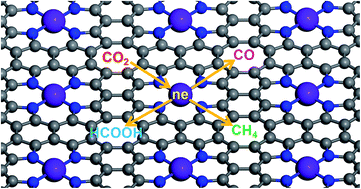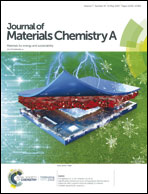Electrocatalytic reduction of CO2 by two-dimensional transition metal porphyrin sheets†
Abstract
Looking for highly stable and efficient electrocatalysts for CO2 reduction is quite crucial, but a big challenge in community. In this paper, the catalytic performance of the first transition metal series–porphyrin (TM–PP) monolayers as single atom catalysts for the electrochemical reduction of CO2 has been studied using density functional theory. The results show that the TM–PP monolayers have excellent catalytic stability and CO2 electrochemical reduction selectivity. The primary reduction product of Sc–PP, Mn–PP and Ni–PP is CO, the primary reduction product of Ti–PP and V–PP is CH4, and the primary reduction product of the other five monolayers is HCOOH. Ti–PP, V–PP, Ni–PP, and Cu–PP have an overpotential >0.7 V, while the overpotentials of the other monolayers are all less than 0.5 V. In particular, the overpotentials for Mn–PP and Co–PP are very low (∼0.13 V). Therefore, TM–PP monolayers are promising systems for experimental research on electrochemical catalysts for CO2 reduction.



 Please wait while we load your content...
Please wait while we load your content...